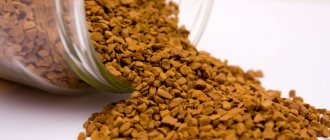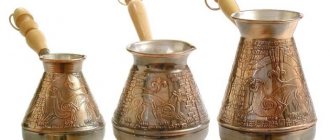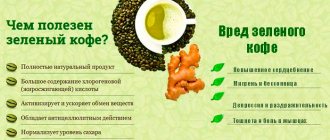The language of any country undergoes various changes over time: foreign words are fixed, the names of modern technical inventions are introduced, and forms of use are simplified. However, there is still ongoing debate about what kind of “coffee” and how it should be said.
What gender does the word coffee belong to?
In the coffee world, due to the emergence of different preparation methods, varieties of berries, names of drinks, many new terms have appeared over the past decades.
Information from history
In Russia, coffee has been known since the 17th century, when a doctor prescribed this drink to Tsar Alexei Mikhailovich as a cure for “arrogance, runny nose and headaches.” It began to be used as a tasty drink under Peter I, after the emperor became addicted to it in Amsterdam. Returning from abroad, in 1718 he issued a decree that guests should be served not only tea, but also treated to a new invigorating drink at assemblies and in the Kunstkamera.
In 1718, Peter I issued a decree ordering that, along with tea, guests should be served a new invigorating drink - coffee.
During the times of the Russian Empire, in addition to the word “coffee”, they also used “coffee” or “coffee”. Writer N.S. Leskov, in his work “Pabubniks” of 1885, writes both options, but for the Russian author they have different shades. “Kofiy” serves to convey village speech.
Forms that end in -y ceased to be the linguistic norm at the end of the 18th century. They are perceived as ignorant and vernacular. The main option remains “coffee”.
The meaning of the word "coffee"
There are several assumptions about where this word came from, but this is still not known for certain.
The Arabic word for a type of wine is qahwah; in Turkish - kahve, which could become the ancestor of the word “coffee”. Perhaps the name of the aromatic drink was given by the Ethiopian region of Kaffa, which is the birthplace of the coffee tree. In Kaffe itself, coffee is called “buno”. Wikipedia reports that in Europe the name of this aromatic drink was the Dutch word koffie, which in 1598 came into English as coffee.
In Russian explanatory dictionaries there are several meanings of the term, for example:
- A plant that produces fruits and grains.
- Coffee beans.
- Ground powder from these grains.
- A drink based on coffee beans.

The birthplace of the coffee tree is the Ethiopian region of Kaffa.
How to speak correctly
According to the rules of the Russian language, units of speech ending with the letter -e belong to the neuter gender. However, for example, in the explanatory dictionaries of S. Ozhegov and V. Dahl, the noun “coffee” is classified as a masculine grammatical feature.
There is no clear answer why the name of the invigorating drink began to be used in the masculine gender.
Why has coffee always been classified as masculine?
It is believed that this drink was first mentioned in Russia in the neuter gender. From what moment it began to be used in men’s clothing is unknown. This may have happened under the influence of the elite, who sought to distinguish themselves and emphasize their status in speech: saying “my coffee” was an indicator of prestige.
There is also a version that at first they said “coffee” and “coffee” in the masculine gender, so this term began to be used in the same way. For example, “... you should drink your own coffee” (A. Chakovsky, “Blockade”, 1968) or “She waited until the valet put out the coffee and left” (L. Tolstoy, “War and Peace”, 1867-1869).
Nevertheless, there is no exact confirmation that these obsolete forms were the original ones and that the grammatical feature was fixed from them. According to the research of philologist M. Eliferova, in 1700-1800. the form “coffee” occurred 15 times, “coffee” 25 times, and the form “coffee” 84 times. It follows from this that already in the 18th century. the predominant option was the one well known to everyone.
Can it be used in the neuter gender?
Even before the beginning of the 2000s. in modern Russian, only the masculine gender was considered correct, and only in some dictionaries did colloquial speech allow the neuter gender. But already in 2009, according to the order of the Ministry of Education, it became possible to use this noun both in m.r. and in sr. r., i.e. since then, “delicious coffee” has ceased to be a colloquial option and an indicator of illiteracy.
Many people disagree with this decision and try to stick to only one form.
Russian language reform
In 1992, the “Spelling Dictionary of the Russian Language” was published, in 1999 - the “Russian Spelling Dictionary” of the Russian Academy of Sciences, in which the noun is considered to correspond to two genders at once: masculine and neuter.
In 2002, a reform of the Russian language took place in the Russian Federation. She also affected this lexical unit. The Russian Academy met halfway and allowed the use of both word forms. Unification helped those who were accustomed to classify “coffee” as neuter.

How did the confusion happen?
Over the course of several centuries, the word has undergone spelling changes. This created problems with tribal identification.
Such changes have a historical basis. For a long time, in foreign languages, the noun “coffee” was changed from masculine to neuter, and even feminine. The word came into Russian vocabulary from several languages at once. In each of them his sound was similar.
- When transcribed into Russian from Dutch or Turkish, “coffee” began to be pronounced as “coffee” or “coffee”. Hence the option in which it is a declinable masculine noun. Subsequently, the indeclinable word form “coffee” became a derivative of them.
- In Russian, nouns ending with the letters “o” and “e” are usually classified as neuter. Consequently, this noun should also become one. To avoid confusion, and in accordance with foreign words, the ending “th” was added. Over time, the ending fell away, and only the word “coffee” remained.
Be sure to read: Vending: how to make money from coffee machines
Literary meaning
Very often in literary works you can find the use of the word “coffee”, “coffee”. Writers use them to emphasize certain nuances and focus attention on what is happening in the text. They use this noun in the neuter gender in the same way.
In the same work, a word form can be used differently. For example, in the story by V.P. Nekrasov “Three Meetings” there is the following text: “: Only once he [the orderly] was not up to the mark - he brewed trophy coffee beans in a pot for an hour, and then came and threw up his hands: - I don’t understand anything, Comrade Captain... I cook and cook, but it doesn’t boil.” In this story, the correct use of the word in the masculine gender is highlighted in the author's text, and in common parlance - orderly in the middle.
Has anything changed in Russian dictionaries?
New alternatives for the use of some words, their grammatical features, like “coffee”, appeared in 2009 in the “Big Phraseological Dictionary of the Russian Language”, “Spelling Dictionary of the Russian Language”, “Dictionary of Stresses of the Russian Language” and “Grammar Dictionary of the Russian Language: Word change." The authors added a second sign “cf. R." and removed the “colloquial” inscription.
Since then, the invigorating drink can be officially used in both genders, although the male one is considered the main one, and the middle one is considered additional.
Declension by case
In Russian, this word is borrowed and refers to nouns denoting various substances (sugar, cream, blood, etc.), so it cannot be unambiguously classified as either singular or plural.

The word "coffee" is inflected the same way, regardless of meaning, case or number.
Usage examples:
- guests treated to (what?) coffee - TV. P.;
- wash the cup after (what?) coffee - R. p.;
- please make (what?) coffee - V. p.
Dictionaries indicate that this word will be declined in the same way, regardless of meaning, case and number.
Powdered, sublimated or in granules – which coffee is better?
As always, this is a matter of taste. Powdered and granulated coffee is cheaper and more accessible, but it is less aromatic and not as tasty. Freeze-dried coffee is more expensive, but definitely tastier, and its smell is much closer to the “original”, especially if the drink is brewed correctly (read about this below).
Today, the choice of instant coffee allows you to find a product that is as similar in taste to regular grain coffee as possible. It's expensive (often more expensive than buying coffee beans), but it's possible.
Ground coffee Lebo “Prince”, for Turkish, 100 g 79 rub.
Coffee beans LavAzza “Qualita Oro”, 500 g 752 rub.
Ground coffee Lavazza “Crema e Gusto”, 250 g 258 rub.
Lavazza “Qualita Oro” coffee beans, 250 g 351 rub.
Ground coffee Lebo “Extra”, for Turkish, 75 g 61 rub.
Ground coffee Lavazza “Qualita Oro”, in a tin can, 250 g 400 rub.
Bean coffee Bushido “Red Katana”, 1000 g 1921 rub.
Coffee beans Lavazza “Qualita Oro”, 1000 g 1550 rub.
Even more coffee at TEA.ru
Additional Information
Today in the coffee industry there are many different types of brewing, serving and recipes for an invigorating drink.
However, not all correspond to the same gender, and some of them still do not have a fixed grammatical norm in Russian dictionaries.
In a cafe you must use:
- Americano - not in dictionaries, but is more often used by analogy with “coffee” in the m.r.
- Cappuccino - you can say in m.r. or cf. R.
- Latte - it is permissible to speak in both m.r. and sr. R.
- Macchiato - not fixed, presumably can be used in both m.r. and cf. R.
- Espresso - should be used in ml.
The use of the noun “coffee” is possible both in the masculine and in the neuter gender “coffee-on”; modern language norms allow both options. Everyone can decide for themselves which grammatical form to choose. However, few people know about the changes made more than 10 years ago, so “good coffee” may still be perceived by others as colloquial.
What is instant coffee made from?
You won't believe it - but exclusively from coffee. Despite all the rumors and myths regarding the “unnaturalness” of the instant drink, there is nothing in it except the same chemicals that are contained in classic coffee.
The basis is coffee beans that have undergone careful selection and quality control. This is not the most expensive raw material, but it meets all the requirements of food standards. During the extraction process, mainly caffeine molecules and trace elements pass into the concentrate, and essential oils evaporate (which is why instant coffee does not have the same taste and aroma as regular coffee).

Composition of instant coffee
Instant coffee contains:
- B vitamins,
- minerals (potassium, calcium, magnesium, phosphorus, sodium and selenium),
- carbohydrates (0.3 g per 100 g),
- antioxidants,
- caffeine.
The calorie content of instant coffee is approximately 1 kcal.
Instant coffee does NOT contain: preservatives, dyes, flavors, stabilizers.
Does instant coffee contain caffeine?
Of course there is! Otherwise, what would be the point of making this product? In its dry form, instant coffee contains approximately 1500–2000 mg of caffeine per 100 g. If you put 1 teaspoon of powder or granules in a cup (that is, 2 g), you get a drink with 30–40 mg of caffeine, 2 teaspoons will have more 60–80 mg of caffeine, which is roughly comparable to a serving of a standard grain Americano. The amount of caffeine per 100 g of product varies depending on the manufacturer.
However, instant decaf (decaffeinated coffee) also exists. According to international standards, it should contain no more than 0.03 mg of caffeine per 100 g of product.
Instant coffee Moscow coffee shop on shares "Arabica", glass, 95 g 221 rub.
Instant coffee Ambassador “Platinum”, 95 g 230 rub.
Instant coffee Ambassador “Platinum”, 190 g 370 rub.
Ground coffee in instant Nescafe “Gold”, 750 g 993 rub.
Coffee Jockey “Favorite”, instant, 36 g 66 rub.
Instant coffee D'Arte “Original”, 100 g 349 rub.
Instant coffee Fresco Arabica Blend, sublimated, 100 g -50%
210 rub. 420 rub.
Instant coffee 3 in 1 Nescafe “Classic Cappuccino”, 20 bags 297 rub.
Choose instant coffee on TEA.ru











